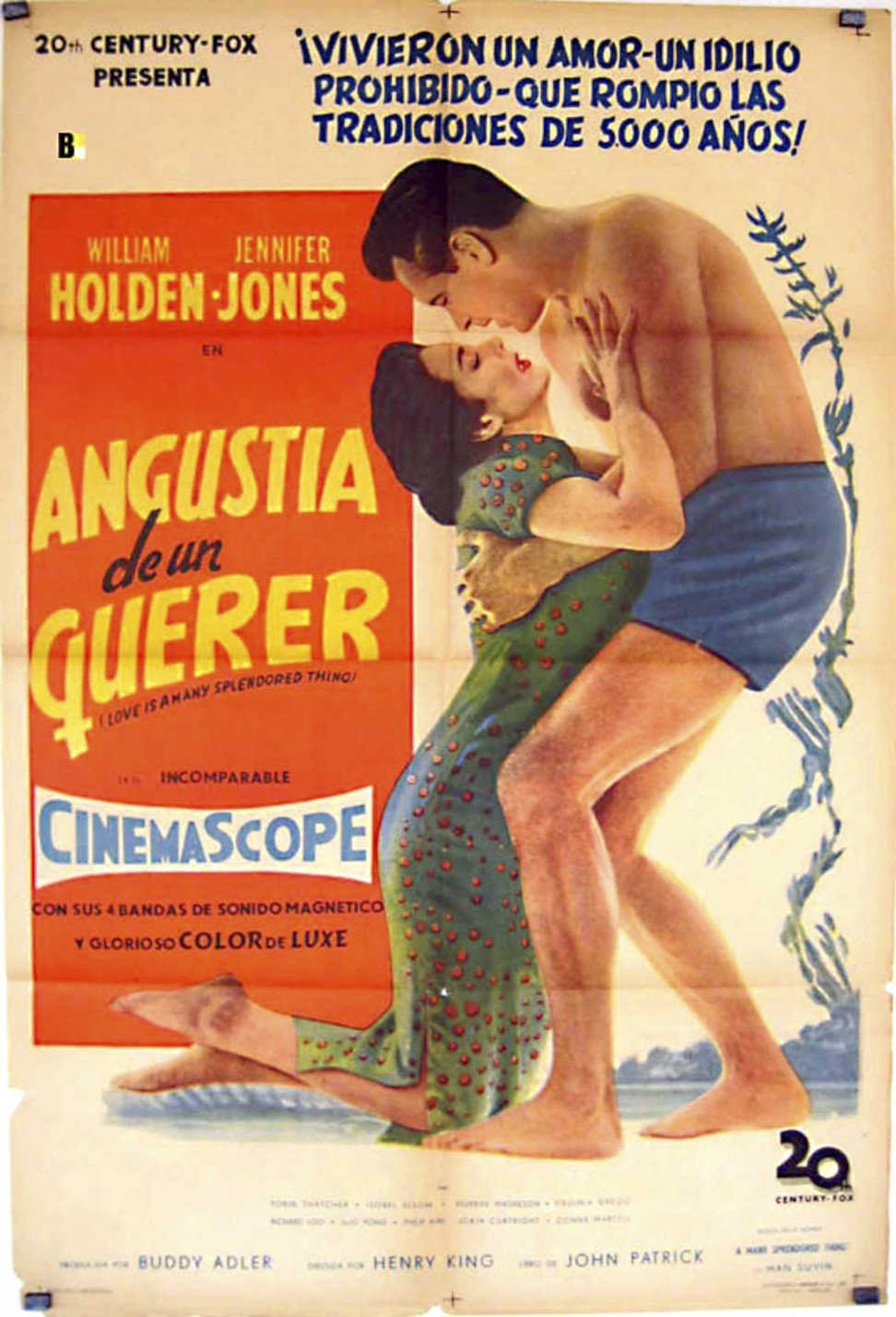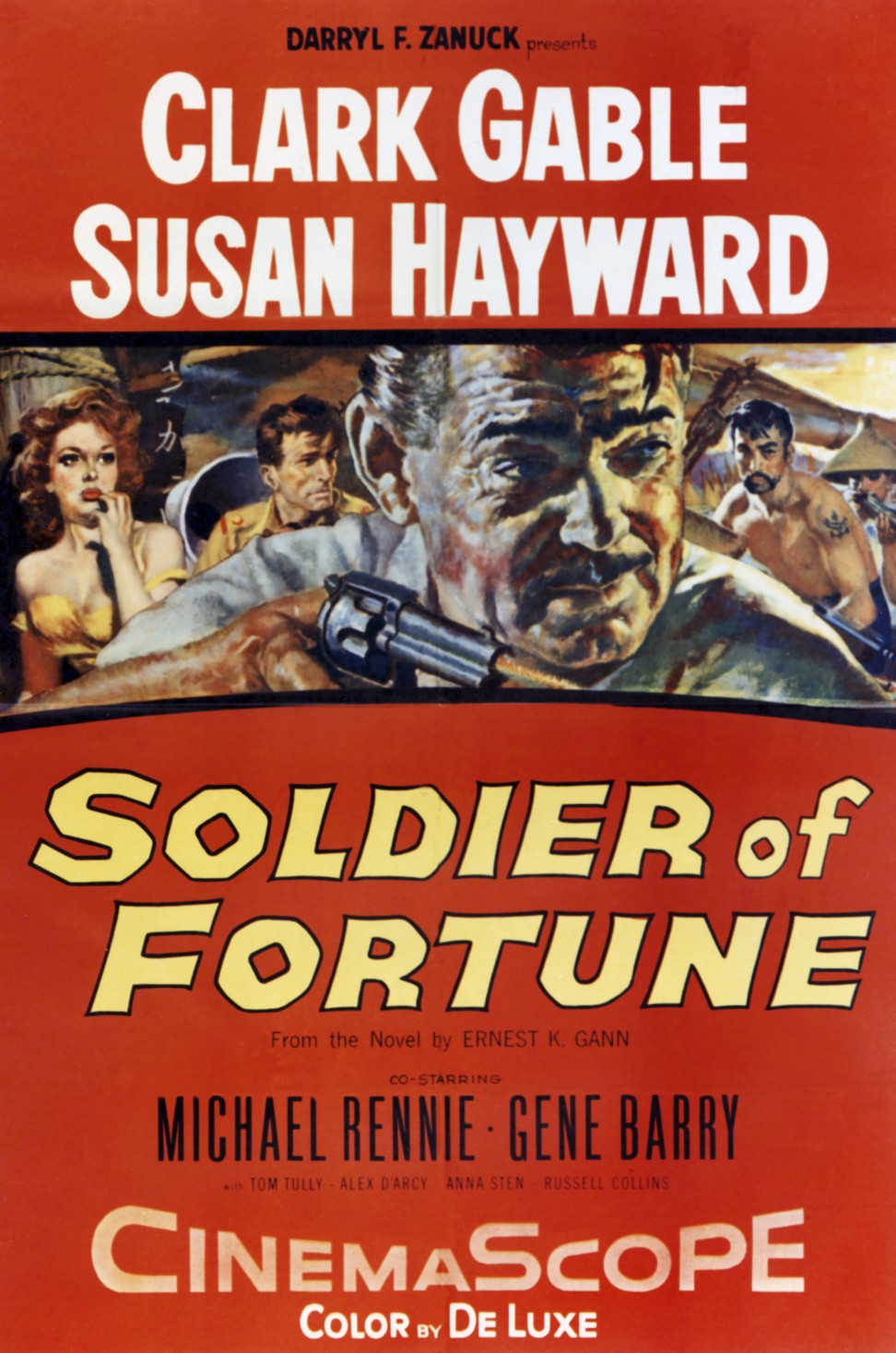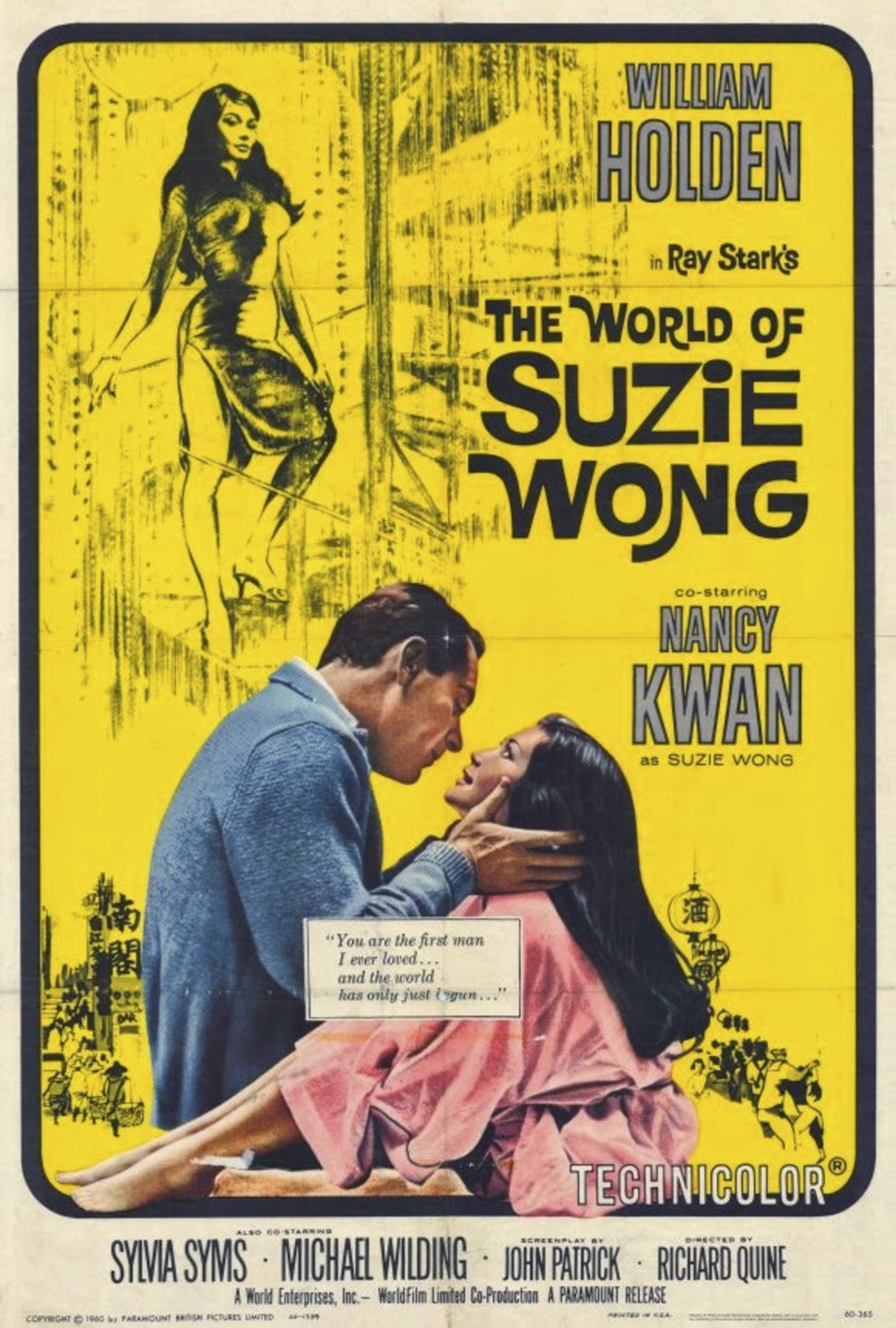
Hollywood in Hong Kong: five East-meets-West films from a time when studios used city’s exotic setting to woo viewers
Big stars including William Holden, Orson Welles, Clark Gable and Steve McQueen all filmed in Hong Kong in the 1950s and ’60s as US and British studios tried new locations to get Western audiences back into cinemas
In no small part thanks to the rising popularity of television, Hong Kong suddenly found itself a popular location for Hollywood films in the 1950s and ’60s, including, notably, the adaptation of Richard Mason’s 1957 bestselling novel The World of Suzie Wong.
Leading Hollywood actors such as William Holden, Orson Welles, Clark Gable and Steve McQueen all filmed in the city as part of efforts by the major US studios to halt the steady decline in American cinema attendances.
Suzie Wong: 60 years after Hong Kong icon was created, we recount an interview with late author Richard Mason
Executives believed ideas such as new widescreen formats and bigger budgets for location filming in exotic places, including “East meets West” Hong Kong, would revive their fortunes. But with changing habits among wealthier American consumers, the fall in box-office profits from 1947 only worsened as US demand for television surged.
Here we look at five major foreign productions filmed in Hong Kong.

Love Is a Many-Splendored Thing (1955)
William Holden, winner of the Oscar for best actor in a leading role in 1953, was one of the world’s biggest box-office stars when he arrived in Hong Kong to film scenes for 20th Century Fox’s hit 1955 romantic drama, Love Is a Many-Splendored Thing.
The tear-jerker, based on the popular 1952 autobiographical novel A Many-Splendored Thing by Han Suyin, is set in Hong Kong in 1949-50, as the Korean war begins. It focuses on the interracial romance between Holden’s married but separated American journalist, Mark Elliott, and Han, a widowed Eurasian doctor, played by Jennifer Jones. The lovers face prejudice and criticism from her family and Hong Kong society, only for Elliott to be killed while covering the war.

Cinematographer Leon Shamroy’s fine widescreen location footage, filmed over two weeks, serves up fascinating scenes: among them Holden and Jones driving through narrow Hong Kong streets to Aberdeen to dine at the Tai Pak Floating Restaurant and tantalising views of the original Repulse Bay Hotel. But the scenes of the hilltop frequently visited by the lovers were actually filmed in California.
The film was also known for the title song of the same name, the melody of which was featured in scenes throughout the film. The song won the Oscar for best original song in 1955.
The two stars, who were praised for their performances by some critics, reportedly did not get along. Holden was unhappy that Jones ate garlic before their love scenes because she was worried about his reputation as a womaniser. He also found her rude and difficult with everyone during filming, and grew frustrated with her constant complaints about her costumes and dialogue, and her make-up making her look too old.
Variety called the film “fine and sensitive”, but The New York Times called the story “commonplace and stilted … [the] characters are stiff and bloodless people with no seeming urge for anything but love … The most fascinating thing about their romance is that it occurs against the colourful backdrop of Hong Kong”.

Soldier of Fortune (1955)
Yes, that really is Clark Gable, the “King of Hollywood” as he was known, in a white linen suit smoking with his back to the camera at The Peak’s Barker Road tram stop, looking out across Victoria Harbour in 20th Century Fox’s stunning opening credits roll.
Right on cue he turns to the camera as the tram arrives, then takes his seat while silhouetted as the tram descends into the heart of the city.
The outstanding location cinematography filmed by Leo Tover in November and December 1954 offers a fine reminder of what Central, Wan Chai, Aberdeen Harbour and Tsim Sha Tsui’s now-demolished Kowloon railway station used to look like.
The visibly ageing Gable, then 53, thought himself too old to play the “soldier”, shady businessman Hank Lee, who comes to the rescue of Susan Hayward’s damsel-in-distress Jane Hoyt after her photographer husband is arrested and accused of spying in mainland China.
Hayward was in a bitter court battle with her former husband over custody of their twin sons as filming began and was unable to take them with her to Hong Kong, so filmed her scenes in California while a double took her place on location.
Today the film seems a little staid and slow. The New York Times called the story, adapted by Ernest K. Gann from his bestselling book of the same name, “a glib and implausible fiction that would be embarrassing to a grade-B film”.

Ferry to Hong Kong (1959)
Cinematographer Otto Heller’s gorgeous views of Hong Kong and Macau are the best thing about Ferry to Hong Kong – a melodramatic flop by British film studio Rank co-starring Orson Welles and the underrated Curd Jürgens (from The Spy who Loved Me).
Just watch the stunning widescreen three-minute opening credits in this German-language link to the film (which was shot entirely on location), as Jürgens’ hungover alcoholic drifter, Marc Conrad, wakes up beside the Hong Kong waterfront and walks into a bar where he starts a fight. If only the rest was as good.
“Ferry to Hong Kong ... is recommended to only the morbidly curious who can see Orson Welles giving his worst performance – and we mean ever,” The New York Times review said. It called the film “as dismal as Welles’ performance”.
Just how poor was Welles as the ferry captain, Hart? Watch this English-language clip.
The film, also hampered by its uneven tone and poor script – co-written by British director Lewis Gilbert – sees Conrad thrown out of Hong Kong and then left stranded on the ferry after being refused entry to Macau. He later turns hero by saving the ferry during a typhoon, then rescuing the passengers by fighting off a gang of pirates, and even finds time to woo Sylvia Syms’ smitten young schoolteacher.

Jürgens and Welles fell out badly during filming after Welles rewrote his scenes to try to play up the humour. Gilbert, who called the film “my nightmare”, said Welles wore a false nose, which he deliberately placed in different positions each day to cause continuity problems, and also padded his cheeks with cotton wool so he could not talk properly.
“[Welles] never cared about his fellow actors … about the director … It was a dreadful film, and everything was wrong with it; principally him.”

The World of Suzie Wong (1960)
The film of Mason’s charming romantic novel – published 60 years ago this year – saw Holden back in Hong Kong to play the budding artist Robert Lomax, who falls in love with the eponymous Chinese prostitute.
The book had captured the imagination of the public and critics around the world at a time when sex, prostitution and interracial relationship were still taboo subjects.
Hit stage versions followed, first on Broadway in 1958, starring Canadian actor William Shatner as Lomax and French-Vietnamese actress France Nuyen as Suzie, and then in the West End in 1959, with Chinese actress Tsai Chin as Suzie.
Actor William Shatner on why The World of Suzie Wong was a tough act
Nuyen was cast as Suzie in the film, while Holden’s English character became an American to help boost the film’s international appeal. But by now the actor’s heavy drinking had taken its toll on his once boyish looks; some critics, along with Mason, felt he was miscast and too old to play the role.
The chaotic production saw Nuyen sacked by producer Ray Stark in London following a bitter row after she had completed a month’s location filming in Hong Kong. She was replaced by Hong Kong newcomer Nancy Kwan – initially rejected as being too inexperienced. Director Jean Negulesco then refused to continue without Nuyen and was replaced by Richard Quine.
Today, cinematographer Geoffrey Unsworth’s marvellous location footage is regarded as the highlight of the film. To see why, take a look at the opening as the camera follows Lomax as he boards the Star Ferry at Tsim Sha Tsui, and later tries to speak Cantonese to a traffic policeman.
Critics complained about the sanitised treatment of Asian prostitution and the archness of the “soggy” screenplay.
The New York Times wrote: “Kwan plays [the prostitute] so blithely and innocently that even the ladies should love her. She and the scenery are the best things in the film.”

The Sand Pebbles (1966)
McQueen was one of the world’s biggest box-office stars when he spent nearly eight weeks in Hong Kong in 1965 filming in the sea near Sai Kung.
When Steve McQueen was talk of the town in Hong Kong
The film, set in mainland China in 1926 and a hit with critics and cinema-goers alike, was based on Richard McKenna’s 1962 bestselling novel of the same name. It tells the story of an American gunboat, the USS San Pablo – nicknamed the “Sand Pebble” – and its crew (the “Sand Pebbles”) as they patrol the Yangtze River during the turbulent early days of the Nationalist revolution and try to rescue a group of American missionaries.
The film, released during the Vietnam war, resonated with the public and critics. It received eight Oscar nominations, including best picture, best cinematography, and one for McQueen – playing the gunboat’s moody, ultimately heroic engineer – as best actor in a leading role, but won none.
Most of the filming had been completed in Taiwan by the time McQueen and the rest of the crew travelled to Sai Kung to film the gunboat’s final battle scenes.

The New York Times commended McQueen for his performance, calling it “the most restrained, honest, heartfelt acting he has ever done”. It also described The Sand Pebbles as a “beautifully mounted film, shot … in lovely colour; a curiously turgid and uneven attempt to generate a war romance, and a finally forceful and depressing blast at getting into trouble over our heads.”
McQueen, who had established his “King of Cool” reputation thanks to iconic roles in The Magnificent Seven (1960) and The Great Escape (1963), took nearly two years off after his Oscar snub before returning in two of his greatest film roles, both in 1968: The Thomas Crown Affair and Bullitt.
